The content of the article
Inflammation of the lining of the conjunctiva of the eye is called conjunctivitis. The disease is more likely to occur as a concomitant symptom of a disease. Less often, an independent form of this disease is diagnosed. Cats, like many other animals, can get conjunctivitis. Various negative factors lead to the development of the disease.
Causes of the onset of the inflammatory process
The inflammatory process in the eyeballs may develop due to:
- injury;
- hit of a foreign body;
- irritation by acids and gases;
- dust irritation;
- penetration of pathogenic agents;
- the development of infection;
- parasites.
Before starting treatment, it is necessary to identify the nature of conjunctivitis. Only after the direct cause of the disease has been eliminated will the recovery phase begin with competent quality treatment. Therapy should be aimed at eliminating the infectious and inflammatory process, restoring the cellular structures of the lining of the eye and preventing complications.
Usually, the infectious and inflammatory process is caused by fungal infections, streptococci, staphylococci, gonococci. The disease can be infectious and non-infectious in nature. To determine the type of pathogen, laboratory analysis of the secret from the inflamed eye will help. The non-infectious form of the disease causes dust, allergies, exposure to chemicals and gases.
Types of conjunctivitis
There are several varieties of the disease. In cats, conjunctivitis can be:
- acute catarrhal;
- purulent;
- chronic
- follicular;
- parenchymal.
In acute form, the lining of the eye swells and mild lacrimation occurs. The environment of discharge from the eye is transparent, but every day it becomes more cloudy and thick. Allocations accumulate in the form of lumps in the corners of the eyes, mucous filaments can be observed at the inner corners of the eyes. Sometimes the skin of the animal is also irritated by the secretions, which causes the hair to fall out in places of irritation. Allocations can dry up after a cat’s sleep and turn into a dry crust, sticking to the eye. If the animal is not treated, then the disease goes into a chronic stage.
The purulent form is characterized by damage to both eyes. Observed:
- general depression of the cat;
- poor appetite;
- allocation of pus from the swollen area;
- swelling of the eye;
- the appearance of the red mucous membrane beyond the contours of the orbit;
- increased t;
- sore eyes.
The follicular form of the disease is considered the most severe in veterinary practice. On the surface of the eyelids, the follicles become inflamed, red small rounds appear. In this case, the eye narrows, blepharospasm, a reaction to light, and tearing are diagnosed. A cloudy film appears on the conjunctiva.
Parenchymal conjunctivitis is manifested by swelling of the eyelids and damage not only to the lining of the eye, but also to other areas. When touching the eyes, severe pain appears. A prolonged illness can lead to blindness of the animal.
The diagnosis of the disease and its form is established by the veterinarian after examination. To prescribe proper antibiotic therapy, it is necessary to establish the type of pathogen that caused the inflammation. To do this, send the secret released from the eyes to the veterinary laboratory.
Main symptoms
The cornea is often involved in the inflammatory process. An animal may lose vision if timely treatment is not started.The disease, as a rule, is manifested by hyperemia and edema of the conjunctiva. Red vesicles may appear on the eyelids. The animal sleeps a lot, does not play. Perhaps a lack of appetite and activity. The depressed state of the pet indicates the onset of the disease. The cat squinted his eyes, tears oozing from their shells. Every day the secret released from the eyes becomes thicker and cloudier.
In some cases, body temperature may rise. In a normal healthy state, the body t of the animal is 38-39 degrees C. In kittens, it is slightly higher. First aid to the animal should be provided at the first sign of a conjunctival lesion.
Treatment
Conjunctivitis is a rather serious problem that needs to be treated with special attention. Do not delay the start of treatment. The disease quickly turns into a chronic form, and complications will not take long.
Violation of various eye functions may develop, visual acuity will decrease. Intensive medication help the cat will avoid the negative consequences of this disease.
Prescribe medication for conjunctivitis should only be the attending physician. The drug is chosen by the doctor depending on the type of pathogenic microorganism. It is necessary to treat two eyes at the same time. Otherwise, the infection will quickly spread to the second.
There are basic rules of therapy:
- With any form of conjunctivitis, the mucous membranes of the eyes must be washed with antiseptic solutions. For this purpose, a weak solution of potassium permanganate or furatsilin are used. Antiseptic solutions are highly effective in eliminating infection and the inflammatory process. Their constituent drug components have a detrimental effect on pathogenic microflora. Antiseptics contribute to the rapid healing of the mucous membrane, increase local immunity, the regeneration of affected cells.
- At the beginning of the development of the disease, it is advisable to use a powerful antibiotic. With conjunctivitis, such drugs as Sofradex, Tetracycline Ointment, Levomycetin are prescribed. Sofradex is a new generation drug that can be successfully used in the treatment of animals. The medicine includes framycetin sulfate and dexamethasone. These two main components contribute to the cessation of the activity of pathogenic bacteria that cause changes in the shell of the eyes. Sofradex is available in the form of drops. It is necessary to instill them in 1-2 drops in each eye 2-3 times a day. Pre-cleaning of the affected areas from pus and mucus is performed.
- Swelling of the eyeball is removed by instillation of a solution of 1 ml of novocaine and 0.2 ml of hydrocortisone. If necessary, the veterinarian may prescribe another medicine.
It is important to prevent the transition of the acute form of the disease to chronic. With a constant inflammatory process under the eyelids, it is necessary to carefully apply ointments with an antibiotic and instill solutions with silver ions. Today, the pharmaceutical industry offers a wide variety of antibiotic-based emulsions and ointments.
In the treatment of erythromycin or tetracycline ointment is widely used. Gentamicin ointment can also be used. Before applying the drug, rinse your eyes with an antiseptic. Next, a small amount of medicinal ointment is applied to a cotton swab. An eyelid of an animal is lifted and an ointment is laid under it. The excess ointment that comes out is cleaned with a swab.
Treatment with follicular and purulent forms is carried out with antibiotic injections. Three times a day, eye rinse is prescribed with a solution of boric acid. This drug effectively kills pathogenic flora and promotes rapid regeneration of mucosal tissue. After washing, ointment with the prescribed antibiotic is placed under the eyelid. In some cases, the use of gentamicin helps to cope with the disease.Eyes are instilled with solutions of this medicine or drops with the inclusion of gentamicin in the composition.
With eye soreness, the veterinarian is advisable to perform novocaine blockade. This helps to reduce swelling and relieve pain.
The inflammatory process must be removed very quickly. Otherwise, he may switch to other structures of the eye. Then a longer treatment will be required. With insufficient therapy, blindness of the animal is possible.
Conjunctivitis Complications
Unfortunately, even the most competent treatment of the disease can lead to complication. This may be due to autoimmune reactions in the animal’s body, a decrease in immunity, and the penetration of the virus into the body.
Complications lead to:
- untimely initiation of therapy;
- self-medication without the supervision of a veterinarian;
- the attachment of a bacterial infection;
- the accession of the virus;
- decreased immunity;
- treatment with an improperly selected antibiotic.
The use of antimicrobial drugs helps prevent the development of complications. However, in some situations, you may experience:
- fusion of the cornea and iris;
- sores;
- decreased visual acuity;
- spread of infection;
- damage to other organs;
- blindness.
Very often, the inflammatory process causes sores on and around the eye. Relapse occurs when the disease is neglected. Ulcers are very difficult to treat. Therapy in this case should be prescribed only by a veterinarian who will assess the condition of the visual organ.
Corneal inflammation or keratitis is the most common complication. Corneal tissue ceases to be shiny and transparent. The eye becomes cloudy. Antimicrobials prescribed by a veterinarian can give a positive result in treatment. Antibiotic eye drops are also prescribed. In the presence of the virus, special medicinal serums are used. The course of treatment of keratitis is quite long. Always comply with all medical prescriptions.
Prevention
If the cat visits the street, it is necessary to examine her eyes daily. In case of dust, the eyes should be washed with a solution of potassium permanganate or furatsillina. When tearing is required to eliminate the negative effects of the substances that caused it.
It is necessary to vaccinate the animal in a timely manner against various viruses and infections. This strengthens the immunity of the cat and prevents the infectious process from developing in the body. After a habit, the risk of developing an ailment decreases several times.
The pet needs to be combed out regularly. Removal of dead hair and skin particles from the cat's body prevents damage to the skin around the eyes and subsequent infection with dangerous microorganisms. Get a special scallop for a cat and comb out its hair daily from dust and dirt.
It is necessary to monitor the diet. A well-fed, healthy animal is less likely to catch an infection and get sick. Immunity should be strengthened with vitamins. It is important to timely deworm the pet.
Video: how to treat conjunctivitis in cats and cats







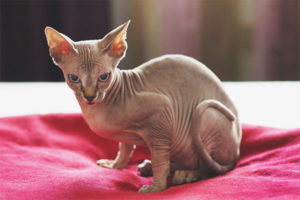
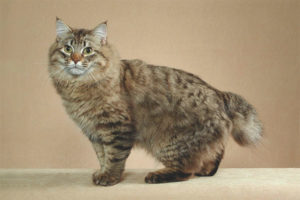
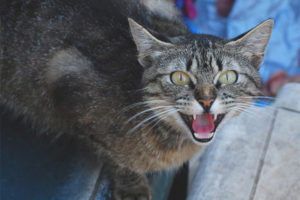
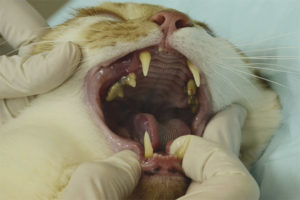
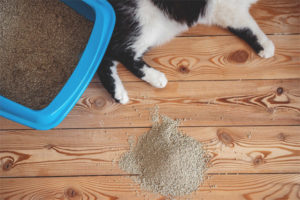
Submit